
Volunteering at a Bird Observatory
Louis Driver shares his experiences of volunteering at Bardsey Bird Observatory, supported by the Young Bird Observatory Volunteer programme.
Louis Driver
Louis is 16 and a birdwatcher and trainee ringer from Northumberland. He birds on his local patch and enjoys ringing at migration hotspots around the UK. He takes part in BTO’s Nest Record Scheme and WeBS and is a keen moth recorder.
Louis' Twitter
Relates to projects
On these cold, dark winter nights it is nice to reflect on the events of the warmer months, and, I must say, summer 2019 was a fantastic one! One of the main reasons for this was the week I spent on Bardsey Island, North Wales, on the Bardsey Bird Observatory’s annual Young Birders’ Week, very kindly paid for by BTO through their Young Bird Observatory Volunteers programme.
Having travelled south to Merseyside on Friday 16 August, the plan was for me to stay overnight with my good friend, and fellow young birder, Luke Anderson, before heading across North Wales to Aberdaron to take the boat across to Bardsey. Unfortunately, due to adverse weather, we were unable to make the crossing until Monday 19 August. On the bright side, these two days were not wasted – we spent the extra time birding the Wirral peninsular. We went to Luke’s patch, Bidston Moss, a lovely little nature reserve just five minutes from his front door, and we visited Hilbre Island, where we stayed over the high tide and were treated to Arctic Skuas, Whimbrel, Wheatear and even Little Terns. Lastly we stopped at Burton Mere, where highlights included Great White Egret and Green Sandpiper.
Meeting the other young birders at Aberdaron during a fairly calm day on the 19th, I knew it would be an awesome week – we got on straight off the bat. The feeling on the boat was amazing, however windchilled and salt-bitten we may have been, we were full of anticipation for the days ahead. We were kindly welcomed by warden Steve Stansfield, his wife Emma and his son Connor, as well as Lewis Hooper, the assistant warden. After arrival, and having carried our bags to our assigned rooms in the obs, we enjoyed drinks and (very delicious) cookies in the sun outside the observatory, while Chough cried and Peregrine soared overhead. Before tea we went for a short walk to the north end of the island, from which we saw a small group of Risso’s Dolphin – Bardsey being one of the best places to see this species – before skirting along the bottom of the mountain back to the obs at Cristin.
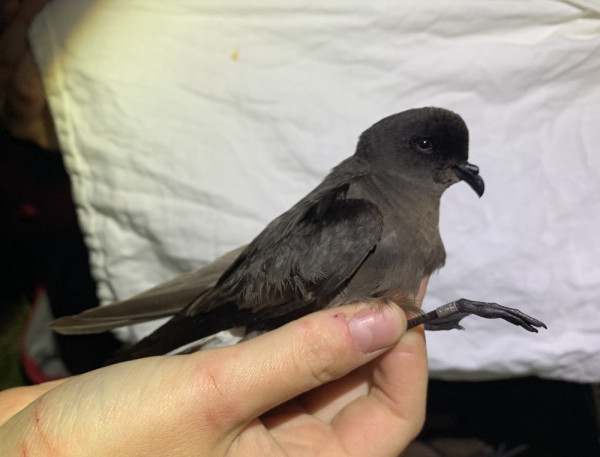
After we had cooked, eaten, chatted, and darkness had fallen, we headed back north to Nant Valley where a mist net was set to try to catch Storm Petrels. This tiny pelagic species breeds in crevices in rocks in fairly small numbers on Bardsey, but many pass the island as they feed during late summer. Using a tape lure, we hoped to draw these birds in to ring. This can yield some impressive results, with frequent catches from overseas and many living to a good age. We managed to catch four individuals – not a huge number, but any opportunity to see, handle and sniff these wonderful birds is a good one, especially as many of the attendees on the week, including myself, had never seen the species before.
Our late-night ringing was no excuse for excessive rest that night. We were up bright and early the next morning – many of us heading out birding, while I and some of the others stayed at the obs in the hopes of catching and ringing some migrants passing through that we were catching in mist nets set around the garden. Unfortunately, there were very few birds moving through, and so the ringing was very slow. However, the ringing team was very thankful to have stayed at the obs when an excited broadcast came through the radio…
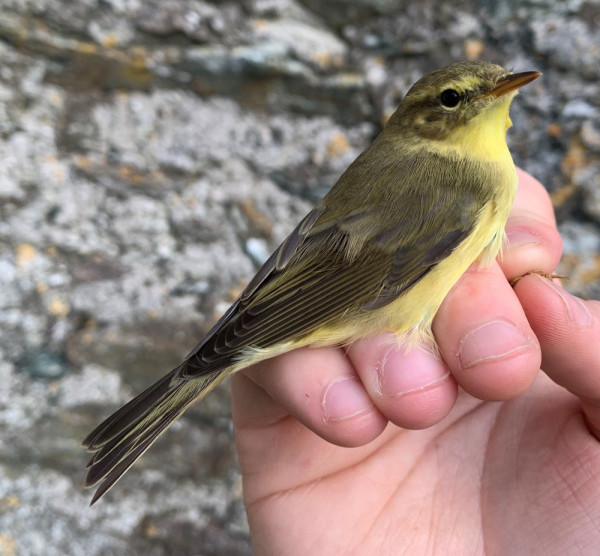
“FEA’S PETREL, FEA’S PETREL HEADING SOUTH!”
With no birds to ring, we rushed straight up to the patio outside the obs, the prime seawatching site on the island, where Steve was frantically getting other young birders onto the bird. I didn’t have my scope to hand, and so hurriedly grabbed a spare and scrambled into position, using my knee as a replacement tripod, and began scanning, following the constant stream of information coming from the others, many of whom were now onto the bird. By the time it had passed, I had, unfortunately, failed to find the bird in my scope view. But most people had seen it, and, as someone who rarely seawatches, dipping the bird didn’t take away from my overall experience of the trip.
If you are slightly bewildered why one bird caused so much excitement, the Fea’s Petrel is a rare seabird that breeds on Madeira and Cape Verde. They are very rarely seen in UK waters, being one of the most sought-after species for seawatchers – however, records are becoming more frequent, due to both increased observation and higher ocean surface temperatures forcing the birds northwards to find food.
... ringing has been crucial in understanding the birds’ great migrations, as well as learning more about their amazingly long lives.
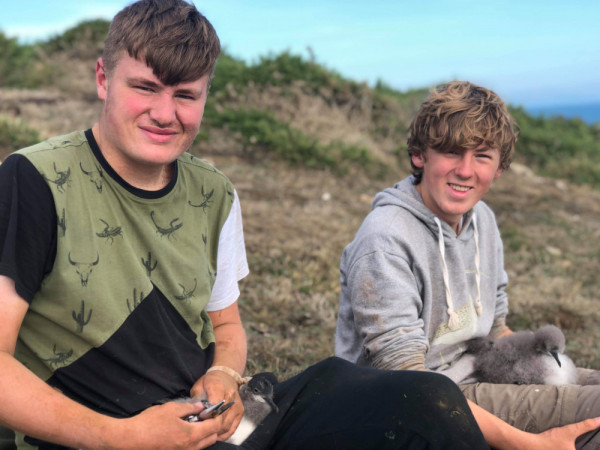
Not long after the bird passed through, we closed the nets and made ourselves lunch. The trip is all self-catered, other than the first night when we all bring ingredients for a large chilli, and the last night, which is a barbecue that everybody also contributes to. To ease in our packing and cooking, I teamed up with attendee Isaac West– for our evening meals we brought a couple of meals for two each and cooked together. This worked well, and reduced the stress of bringing five single portion meals. Lunches were far smaller and easier, personally often comprising of a large bowl of porridge or a baked bean wrap (far nicer than it may sound!)
Hands-on with Manxies
After everyone had returned to the obs and fed themselves after a busy morning’s birding around the island, ringing or seawatching, the majority of us headed up to the north end of the island, led by Steve, where there is a large number of nesting Manx Shearwaters. These incredible seabirds are Bardsey’s real speciality, with over 20,000 pairs nesting on the island. They make their nests in burrows which can be found almost anywhere on Bardsey, where the single fluffy chick will grow for a period of around two months after hatching before it leaves to the south Atlantic off southern Brazil. We were taught how to safely and gently extract these very chicks from the burrows for ringing. This ringing has been crucial in understanding the birds’ great migrations, as well as learning more about their amazingly long lives – one Manx Shearwater ringed on Bardsey was caught again over 50 years later, making it the oldest bird ever recorded in the UK.
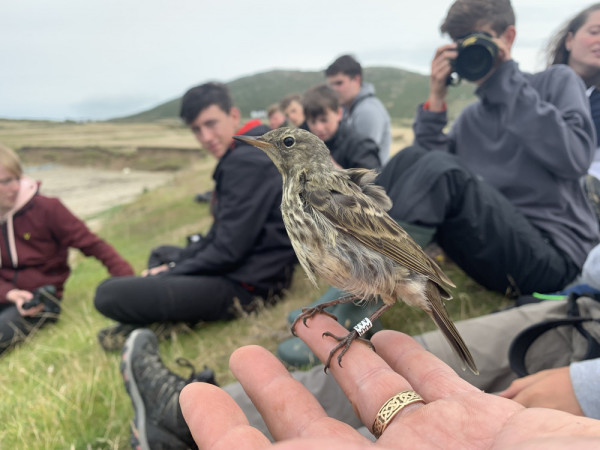
Kindly teasing these fluffballs, fat from the oily fish soup that their parents spew into their mouths after feeding trips lasting a few days at a time, from their burrows may seem like a fairly peaceful activity. But anyone who has been fortunate to have had the experience would know this is far from the truth. Shearwaters have a sharp, hooked bill to catch and kill fish at the ocean surface, and it is clear that they know how to use it from a young age! They were very much capable of ripping some decent scratches into our skin; however, it was all worth it for the reward of ringing these very special seabirds.
However, it is not just the young Manx Shearwaters (or ‘Manxies’) that are ringed on the island - after dark we headed out, armed with headtorches, to search out and catch adults who had arrived back on the island from their foraging trips. They return to feed their chicks in the cover of darkness to avoid predators as, despite being amazing fliers at sea, they are rather slow to move on land or to take off. This makes them very easy to pick up for ringing. After each bird was ringed, it was returned to wherever it was found. However, not all birds needed ringing, as many we caught were already ringed – including some birds that were at least 25 years old, far older than any of the attendees! It is amazing to think how far these individuals have travelled in their lifetimes, racking up hundreds of thousands of kilometres as they cross between the hemispheres in their annual cycle.
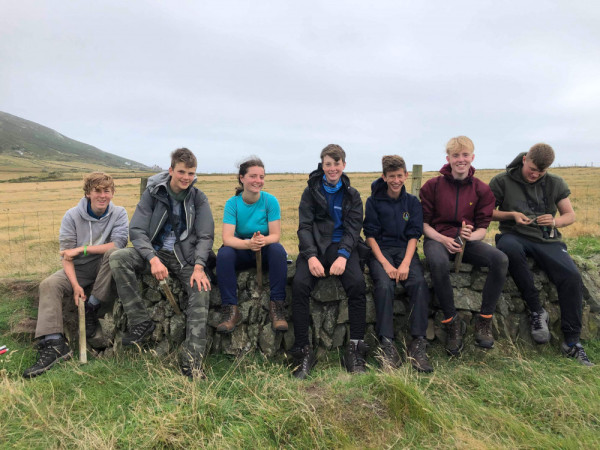
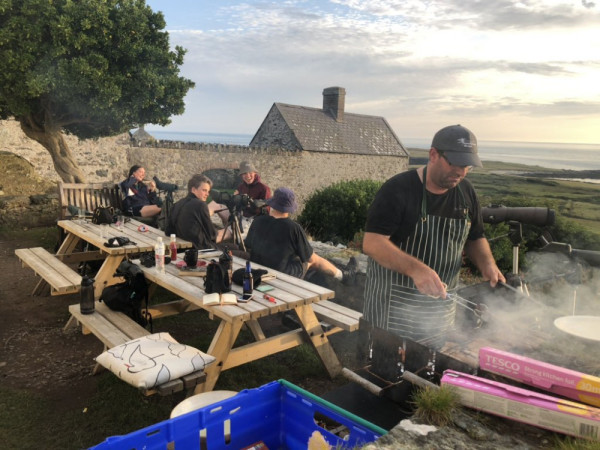
The next morning ringing was slightly more productive, and those out birding across the island reported a small number of migrants, including two Tree Pipits. The standout event of the day was the afternoon, when we headed down to Solfach, a small sandy bay on the west of the island, to set up a portable Heligoland trap, along with a handful of spring traps, to catch and ring a sample of the large number of Rock Pipits feeding on the strandline. Five birds were caught, ringed and fitted with a slightly larger white Darvic ring, with three-digit black codes. These can be read through binoculars, allowing for more easy tracking of the bird’s movements – or to know if they have stayed on the island. These five birds were the first ringed in this project, which aims to find out more about the moult of the pipits.
The weather in the evening was awful, and so we all nestled in to the observatory to listen to some talks – Steve speaking about the International Bird Observatories Conference at Eilat, Israel, at which not only was huge knowledge spread between wardens of the world’s bird observatories, but many awesome species were seen! Next, Alex Starace, the temporary Assistant Warden, spoke to us about Operation Wallacea, a hugely interesting opportunity for young people. Finally, George Dunbar, an intern at the observatory, shared his experiences and photos from Portugal, where he regularly visits with family. After these thoroughly informative and enjoyable talks, we headed off for an early night.
Due to poor weather, we did not ring the next morning, instead taking the opportunity to catch up on some much-needed sleep! After dragging ourselves out of bed we headed down to Solfach again to catch and ring some more Rock Pipits. We managed more birds on this attempt, which was fab, meaning everyone could take their turn with a bird. In the afternoon a handful of the young birders headed back up to the north end to ring more Manxie chicks, while others preferred to stay out birding or attempting to catch Rock Pipits.
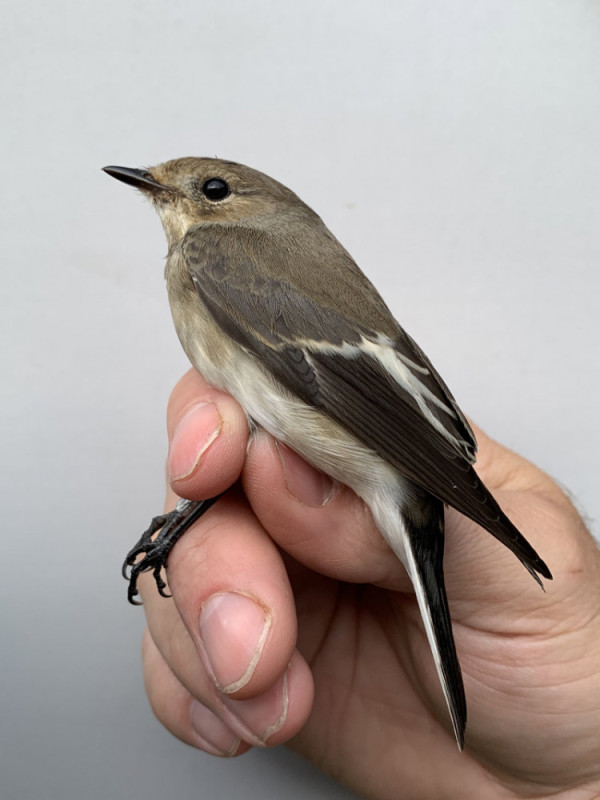
Close Competition
It was now, before we knew it, our second-to-last evening on the island, meaning one thing and one thing only: quiz night! Divided randomly into three teams, we battled it out over rounds covering a huge range of subjects – Latin to geography, maths to (surprisingly) bird ID. In the end, the three teams amazingly scored 49, 49 and 50. Although this was forgotten by the time we were back out ringing adult Manxies, it certainly caused high tensions in the next day’s bird race!
For those unfamiliar with bird races, the concept is that, in teams, you must see as many species in a given time and area as possible. For ours, we stayed in our quiz teams, and an agreement was made that at least two members of the team must see or hear the bird for it to count on the day list.
Up bright and early, our team devised the strategy for the day and headed off on our ways. For me, this meant staying at the obs ringing – but ready to get my scope on the sea as soon as anything noteworthy passed. The ringing was slow, and so this meant spending more time at my scope than ringing! The nets were soon closed, although, with the success of a single bird, we continued to attempt to catch Swallows in the front garden.
The afternoon was spent with a small group very successfully ringing more Manxie chicks while others continued to rush around the island seeking out any species that stood out as a hole in their day list. Upon returning, one group radioed in that they had found a Little Owl in Nant Valley. With this being one of my (still remaining) bogey birds, I headed up there with team member Angus Jennings. Although we failed to relocate the owl, we did add Black-headed Gull and Reed Bunting to our team’s list, one final push before darkness fell. In the end the teams finished on 58, 60 and 60 – so again, very close!
It was then time to relax with a fantastic barbeque for our final evening meal. After this was enjoyed and digested, we headed back up to Nant Valley in the cover of darkness for some more Storm Petrel ringing. This was even better than on the first night, with eight new birds and two that were already ringed, including one individual that was over 16 years old!
After this it was to the obs for the final night on the island. The next morning was mainly filled with packing, though we managed to ring in the garden, including catching the best bird in the garden all week: a stunning young male Pied Flycatcher.
Finally, we said our sad goodbye to the island, obs and fantastic staff that made us all so welcome on the week. I must again express my enormous gratitude to BTO for giving me a generous grant of £200 through their Young Bird Observatory Volunteers fund to pay for the cost of the week. It has allowed me some amazing experiences and has opened my eyes to the amazing life on an island observatory, as well as the wonders of seabirds. I’m hugely looking forward to returning this summer – despite putting my hands at risk of ferocious Manxie attacks!
The Young Bird Observatory Volunteers programme
Each year the BTO provide a number of grants of up to £200, to support young people looking to visit one of the accredited British and Irish Bird Observatories. You can apply for this grant now, and have an experience like Louis' at a Bird Observatory in the UK.
Find out more and apply.



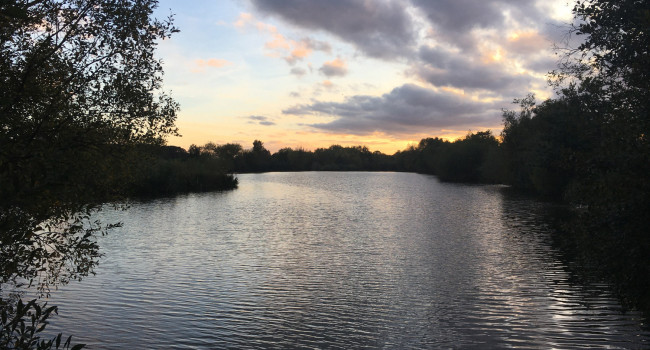

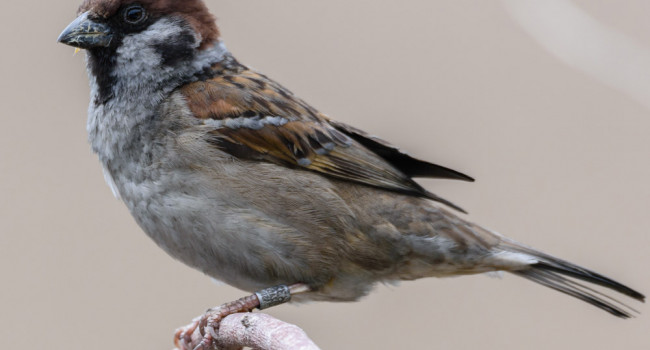

Share this page